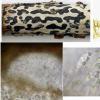
04-11-2025 09:07
Hello.A suspected Hymenoscyphus sprouting on a thi

04-11-2025 12:43
 Edvin Johannesen
Edvin Johannesen
Hi! One more found on old Populus tremula log in O

03-11-2025 21:34
 Edvin Johannesen
Edvin Johannesen
These tiny (0.4-0.5 mm diam.), whitish, short-stip

28-10-2025 15:37
Carl FarmerI'd be grateful for any suggestions for this strik

03-11-2025 16:30
 Hans-Otto Baral
Hans-Otto Baral
Hello I want to ask you if you have found this ye

28-10-2025 19:33
 Nicolas Suberbielle
Nicolas Suberbielle
Bonjour à tous,Je voudrais votre avis sur cette r

31-10-2025 09:19
 Lothar Krieglsteiner
Lothar Krieglsteiner
Can somebody provide me with a file of:Rogerson CT
Coelomycete on Acer wood
Hans-Otto Baral,
21-06-2006 13:00
 Has anybody ever seen this coelomycete? It grew in Sweden (Skane, NP Söderasen, leg. Felix), on undecayed wood of a broken, 18 mm thick Acer branch obliquely hanging on the ground. Stromata 1.5-3 mm broad, 150-250 µm thick, pycnidial cavities 60-150 µm tall. Conidia *9.5-14 x 3.3-4 µm, conidiogenesis very probably phialidic.
Has anybody ever seen this coelomycete? It grew in Sweden (Skane, NP Söderasen, leg. Felix), on undecayed wood of a broken, 18 mm thick Acer branch obliquely hanging on the ground. Stromata 1.5-3 mm broad, 150-250 µm thick, pycnidial cavities 60-150 µm tall. Conidia *9.5-14 x 3.3-4 µm, conidiogenesis very probably phialidic. Zotto
Hans-Otto Baral,
05-08-2006 11:47

Re:Coelomycete on Acer wood
In the meantime, Walter Jaklitsch identified this fungus from my photos as the anamorph of a Diaporthe. In that genus the anamorphs are less diverse than the teleomorphs so that Walter prefers not to name this species from the anamorph alone. Actually, at least 5 Diaporthe species have been described on Acer. At the collection site there was Acer platanoides (natural) and A. pseudoplatanus (introduced), so one of these two Acer species must have been the host of this fungus.
According to Walter, a pseudostroma in the wood forming a so-called ventral zone (= black line in section) - as seen in our collection - is characteristic of many Diaporthe species, and is of course also found beneath the perithecia.
cheers
Zotto
According to Walter, a pseudostroma in the wood forming a so-called ventral zone (= black line in section) - as seen in our collection - is characteristic of many Diaporthe species, and is of course also found beneath the perithecia.
cheers
Zotto

